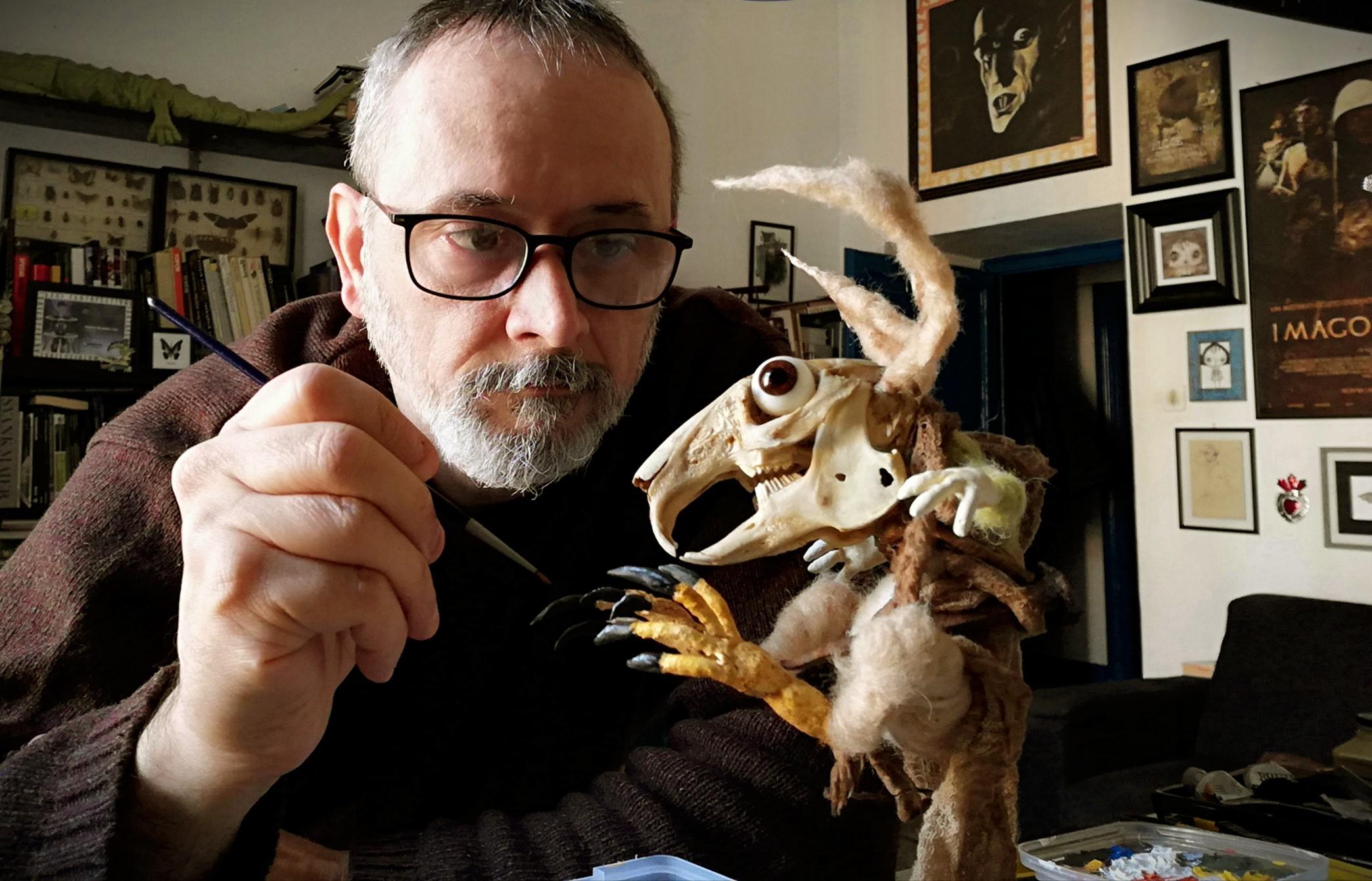The art of Stefano Bessoni protagonist at Cartoons On The Bay 2024 with the exhibition ‘Stefano Bessoni. Stop-motion and other inexact sciences’ edited by Lorenza Fruci. Film director, writer, illustrator and animator, passionate about entomology, anatomy, fairy tales and the history of science, Bessoni sinks his poetics in the concept of wunderkammer and feeds on macabre suggestions that recall the uncanny. At the centre, the stop-motion technique, the black soul of animation, both for the themes it addresses, which often border on the gothic and the mysterious, and for the use of materials for the creation of the puppets, such as bones, rags, old toys and objects recovered from dusty attics. From the film ‘Krokodyle’ to the illustrated books ‘Canti della Forca’, ‘Pinocchio’ and ‘Le Scienze inesatte’, the exhibition is a journey into the artist’s imagination, made up of wunderkammer, strange disciplines and anomalous sciences, anatomy and zoology, dark fairy tales and occult proceedings. The exhibition will be open to the public from 30 May to 1 June (10.00-18.00) at the main headquarters of the Aurum Festival-La Fabbrica delle Idee, in Pescara.
Among the works is Krokodyle (2011), a feature film in which the protagonist is Kaspar Toporski, a young filmmaker of Polish origins who moved away from his hometown at a very young age. While he is waiting for answers to be able to realize his film projects, he spends his days drawing, writing and inventing his own imaginary world which, day after day, seems to become more and more real. Since he was a child, he has had an unbridled admiration for crocodiles, which he considers perfect beings capable of controlling the passage of time. Starring Lorenzo Pedrotti, the feature film won several international awards, including a special mention at the Catalonia International Fantastic Film Festival in 2011.
Canti della forca (2013) is an illustrated book. From the gallows you see the world from a different perspective, that of the Brothers of the Gallows: murderers, thieves, swindlers, but also innocents, dreamers and pure in spirit who, by dint of hanging next to each other, decide to join together in a brotherhood. Again, there is Pinocchio (2014), an illustrated book in which, far from faithfully following the well-known events narrated by Collodi, the author stages the puppet and the dazed circus of characters that revolves around him, providing them with everything that imagination led him to imagine beyond the written text. Bessoni’s Pinocchio is nourished by the suggestions of the famous drama by Luigi Comencini and the illustrations by Enrico Mazzanti and Carlo Chiostri and contaminates them with Shelleyan and Lombrosian influences.
In The Inexact Sciences (2017-2019), a story is revealed in four illustrated books. In time of war, Jonah and Rebecca lived in a remote town on the ocean coast. He was an illustrator, she was a restorer of old toys. One day they inherited an old run-down house, where many years before an anatomist dedicated to strange medical practices that bordered on the occult sciences had lived. During the work to restore the house, Jonah began to come across a small ghost: Rachel, the anatomist’s daughter, who died in tragic circumstances. The funereal little girl pushed Jonah to create his own wunderkammer and to undertake an abstruse experiment. Rebecca tried to stop him from the dangerous project but for her it was the beginning of a terrible daydream.
